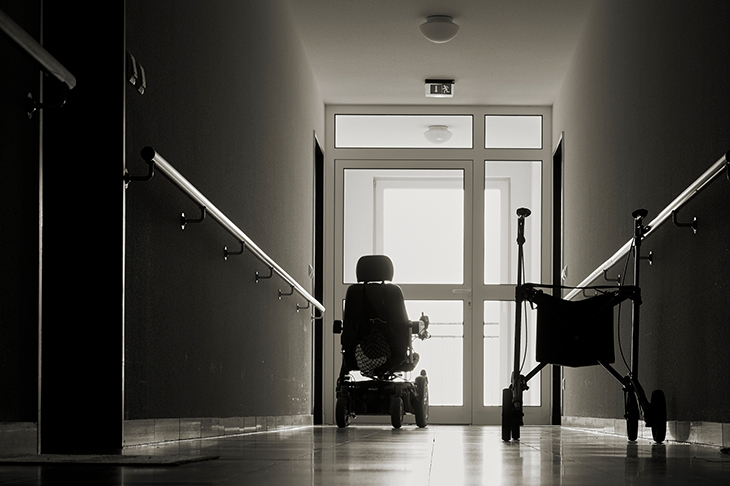Officially, more than 44,000 deaths in England and Wales have involved COVID-19. But how many have died as a direct result of the disease itself and how many are victims of the fear and neglect that it has engendered?
It is remarkable how many deaths during this pandemic have occurred in care homes. According to the Office for National Statistics, nearly 50,000 care home deaths were registered in the 11 weeks up to May 22 in England and Wales — 25,000 more than you would expect at this time of the year. Two out of five care homes in England have had a coronavirus outbreak; in the north-east, it’s half.
Not all these deaths, however, have been attributed to COVID-19. Even when death certificates do mention it, it is not always clear that it is the disease that was the ultimate cause of death. The data refers to people who died with COVID-19 present in their bodies, whether or not it was the direct cause. This raises questions about whether there’s another reason for many of these deaths which has gone largely unnoticed while attention has been focused on COVID-19. This is not just a British phenomenon, but one seen across Europe.
A recent study in the southern Île-de-France region suggests confinement itself has had catastrophic consequences. In long-term care facilities with excess COVID-19 deaths, researchers found that acute respiratory distress was not the primary problem — deaths were mainly due to hypovolemic shock, or fluid loss. Confined to their rooms in lockdown, with staff absences running at 40 percent and with a consequent reduction in the usual support, residents were dying of thirst.
In old age people tend to lose their sensation of thirst, which makes them susceptible to dehydration unless they are reminded and encouraged to drink by staff or family. Dementia further exacerbates the problem, as sufferers can forget to eat and drink altogether and often cannot communicate their needs. Dehydration leads to worsening delirium and confusion, which further limits communication. For such people, having carers around is a matter of life and death.
The COVID-19 crisis has placed extra demands on care homes, many of which were already inadequately staffed after years of underfunding. Across Europe, as in Britain, outsourcing to private contractors (in many cases private equity firms) led to cost-cutting. During the pandemic, many carers became immersed in attempts to prevent the spread of infection. Contact between carers and residents was reduced, often as a result of the lack of personal protective equipment (PPE). Less contact means less care and, therefore, more deaths.
In Spain, where two-thirds of the country’s fatalities have occurred in care homes, prosecutors have launched investigations into the deaths of 140 residents who were found in a state of complete abandonment. Some were already dead in their beds when discovered. Staff had been instructed not to touch the bodies, and funeral service delays meant corpses just lay where they died.
In Italian care homes, families traditionally supply an extra level of care and attention. But when family members were banned from visiting the homes of their elderly relatives, that safety net vanished. For weeks, Italy’s official daily death toll — which was based on deaths in hospitals only — failed to measure the unfolding disaster in care homes. Istat, the Italian equivalent of the Office for National Statistics, has since reported nearly 19,000 additional excess deaths during March and April — people who died either at home or in nursing homes, probably unsupported by family, neighbors or care home staff.
In Britain, the government and other authorities were distracted by the need to protect hospitals from becoming overloaded. Great efforts were made to ramp up testing, increase critical-care capacity and equip hospitals with more ventilators. Care homes — 801 of which already had COVID outbreaks by the time lockdown was imposed — were overlooked. In order to free up space in hospitals, older patients were discharged into care homes without even being tested for the virus. In the two weeks after lockdown, when the risk of infection should have been waning, a further 1,800 homes in England reported outbreaks.
In Scotland, police are investigating the deaths of three residents at a care home in Skye where ten residents died. Nearly half of Scottish COVID deaths have been in care homes, and so far three in five homes have notified the Care Inspectorate of a suspected outbreak.
Sweden, which refrained from imposing a lockdown, has been criticized by many for ending up with a higher death toll than Norway or Denmark. But here, as elsewhere in Europe, the real problem was in care homes — where nearly half of COVID deaths have occurred. Protective equipment was not available and symptomatic staff still turned up to work. Lacking clinical expertise, staff were unable to administer oxygen.
[special_offer]
Contrast the above with the situation in Hong Kong, where 54 nursing homes were affected by the 2002-03 Sars epidemic. Spooked by this, authorities took infection control seriously this time around. Visits to care homes were restricted by January. Testing was made available for all patients who exhibited symptoms (in contrast to Britain). New admissions to care homes were limited. As a result, Hong Kong’s visiting doctors were better able to attend to the needs of residents. Most homes kept one to three months’ supply of protective equipment. Staff were trained in infection control. As a consequence, in the COVID crisis, Hong Kong has seen no deaths in care homes. Not one.
It has taken a global pandemic to realize what has been going on in care homes: underfunded, under-resourced and understaffed, many were destined to fail. Simple restoration of fluids, nutrition, a little oxygen therapy and good supportive care can often save the lives of the frailest and most vulnerable. But with medical attention focused on slowing the spread of COVID-19 in the community at large, care home residents were denied basic care. Lockdown did nothing to impede deaths in the place where they were most likely to happen.
Out of sight, the elderly have remained out of mind. Many homes were already not fit for purpose. The extra confinement which came with the Covid-19 panic has proved deadly. For the sake of a drink, in many cases, the elderly have died in their droves. We will, next time, learn lessons about what not to do. But we can help by being honest with ourselves about a scandal that is still ongoing.
Prof Carl Heneghan is director of the Centre for Evidence-Based Medicine, where Prof Tom Jefferson is a senior research fellow. This article was originally published in The Spectator’s UK magazine. Subscribe to the US edition here.


















